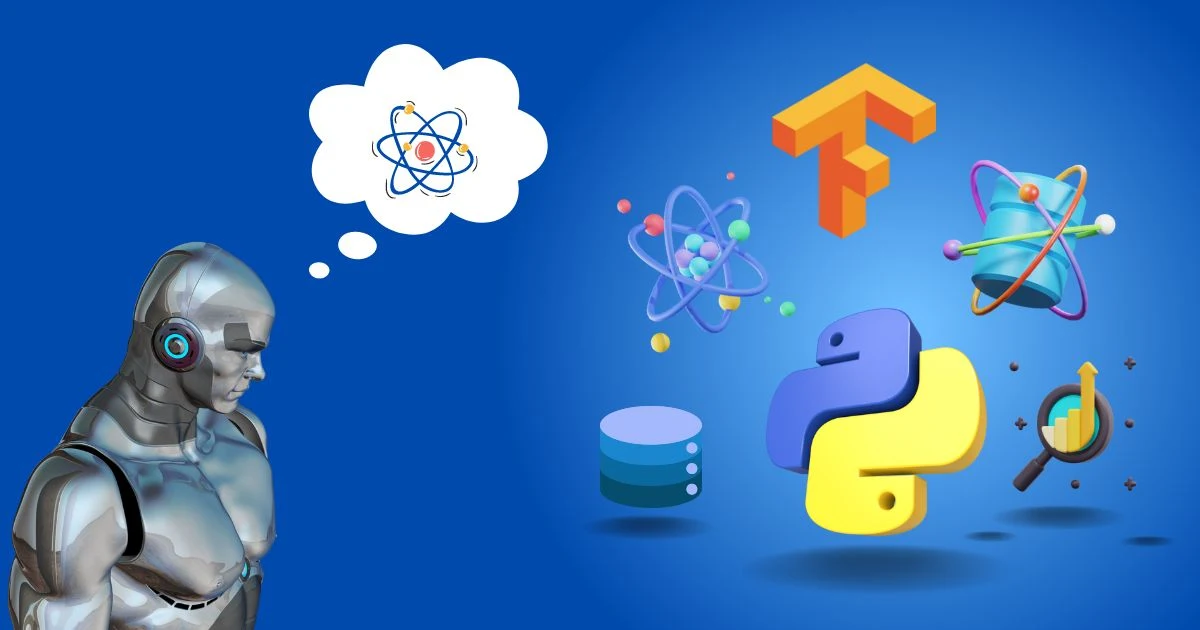
As data science continues to evolve, Python remains the go-to language for its versatility, ease of use, and rich ecosystem of libraries. In 2024, data scientists have an array of exciting projects to explore, each leveraging Python's power to analyze, visualize, and derive insights from complex datasets. In this blog post, we'll explore 10 major Python projects for data scientists to dive into this year.
Why Python is prime language for data science
10 major Python projects for data science.
Here lets we explore 10 python project for data science.👇
1. PyCaret
PyCaret is a low-code machine learning library that simplifies the end-to-end machine learning process. With PyCaret, data scientists can perform tasks such as data preprocessing, model training, hyperparameter tuning, and model deployment with just a few lines of code. Its intuitive interface makes it ideal for rapid prototyping and experimentation.
2. TensorFlow 2.0
TensorFlow, Google's powerful machine learning framework, continues to evolve with its 2.0 version. With eager execution by default, intuitive APIs, and support for advanced features like automatic differentiation, TensorFlow 2.0 empowers data scientists to build and deploy sophisticated deep learning models with ease.
You may like:- Explore Key Difference between tensorflow and tensorflow 2 for Machine Learning
3. Dask
Dask is a flexible library for parallel computing in Python. It allows data scientists to scale their data analysis workflows from single machines to distributed clusters, enabling seamless handling of large datasets. With Dask, tasks such as data manipulation, model training, and hyperparameter tuning can be efficiently parallelized, leading to significant performance gains.
4. Plotly Dash
Plotly Dash is a Python framework for building interactive web applications for data visualization. With Dash, data scientists can create custom dashboards, reports, and data-driven applications with ease. Its declarative syntax and extensive component library make it simple to create engaging visualizations that communicate insights effectively.
5. Apache Spark with PySpark
Apache Spark is a fast and general-purpose cluster computing system that provides comprehensive support for big data processing. PySpark, the Python API for Spark, enables data scientists to leverage Spark's distributed computing capabilities from within the familiar Python ecosystem. With PySpark, tasks such as data wrangling, exploratory analysis, and machine learning can be efficiently performed at scale.
6. Hugging Face Transformers
Hugging Face Transformers is a popular library for natural language processing (NLP) tasks such as text classification, named entity recognition, and machine translation. With pre-trained models and easy-to-use APIs, data scientists can quickly build and fine-tune state-of-the-art NLP models for various applications.
7. scikit-learn
scikit-learn remains a cornerstone library for machine learning in Python. With its simple and consistent interface, scikit-learn provides a wide range of algorithms and tools for tasks such as classification, regression, clustering, and dimensionality reduction. Whether you're a novice or an expert, ssci-kit-learn offerssomething for everyone in the data science community.
You may like📈 :- Top 10 Python Libraries for Data Science
8. Prophet
Prophet is a forecasting library developed by Facebook for time series analysis. With its intuitive API and automatic seasonality detection, Prophet simplifies the task of forecasting future trends from historical data. Data scientists can use Prophet to generate accurate forecasts with minimal effort, making it an invaluable tool for business planning and decision-making.
9. Bokeh
Bokeh is a Python library for interactive data visualization that targets modern web browsers. With its powerful capabilities for creating interactive plots, dashboards, and applications, Bokeh enables data scientists to communicate their findings effectively to stakeholders. Its seamless integration with Jupyter notebooks makes it an excellent choice for exploratory data analysis and presentation.
10. Apache Kafka with confluent-kafka-python
Apache Kafka is a distributed streaming platform that enables data engineers and data scientists to build real-time data pipelines. With the confluent-kafka-python client, data scientists can easily integrate Kafka into their Python workflows for tasks such as data ingestion, stream processing, and real-time analytics. Kafka's scalability, fault tolerance, and high throughput make it a key component of modern data architectures.
Conclusion
Python continues to be the language of choice for data scientists, offering a rich ecosystem of libraries and tools for tackling diverse challenges in data analysis and machine learning. By exploring these 10 major Python projects, data scientists can stay at the forefront of innovation and make meaningful contributions to their organizations in 2024 and beyond.





0 Comments